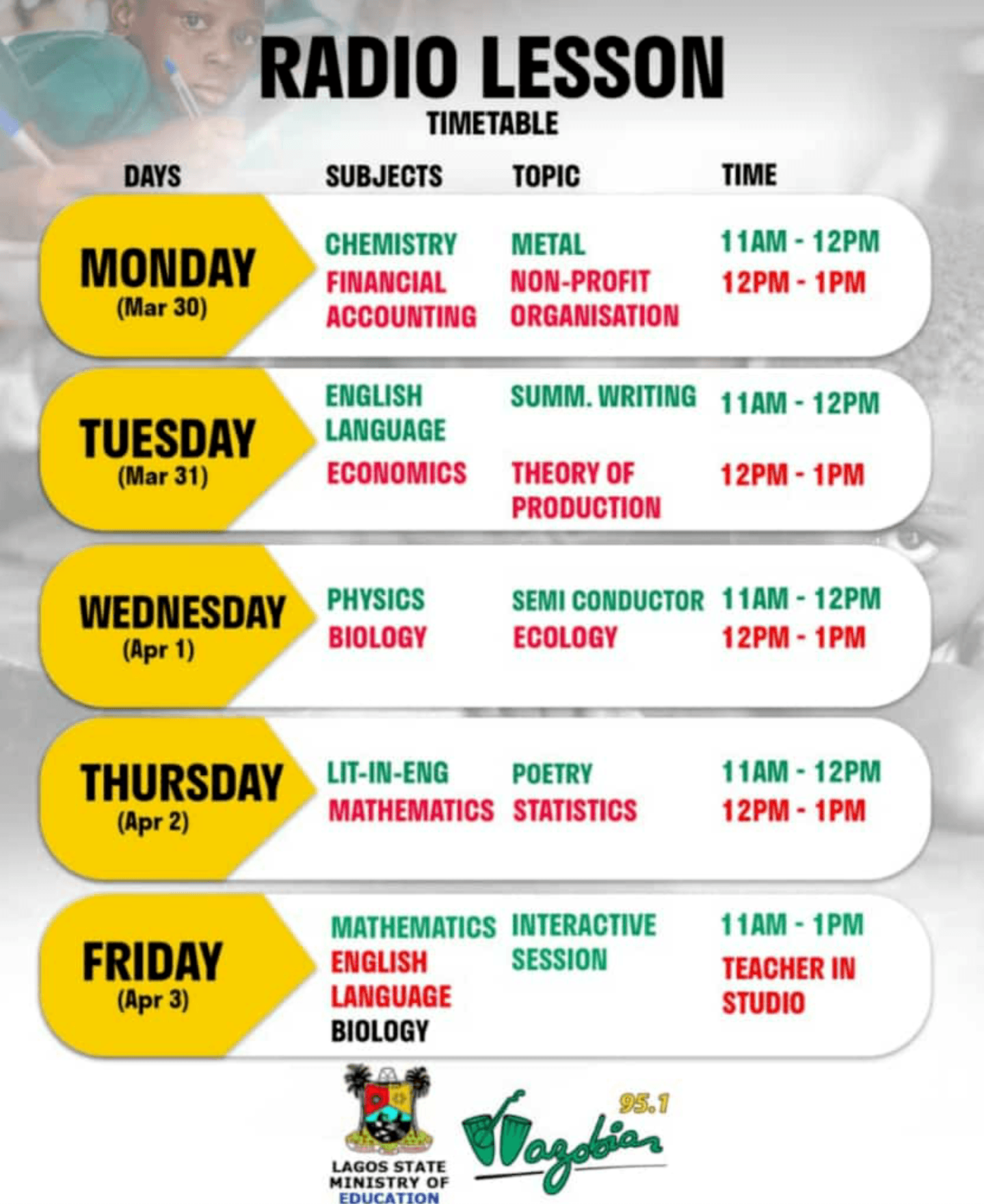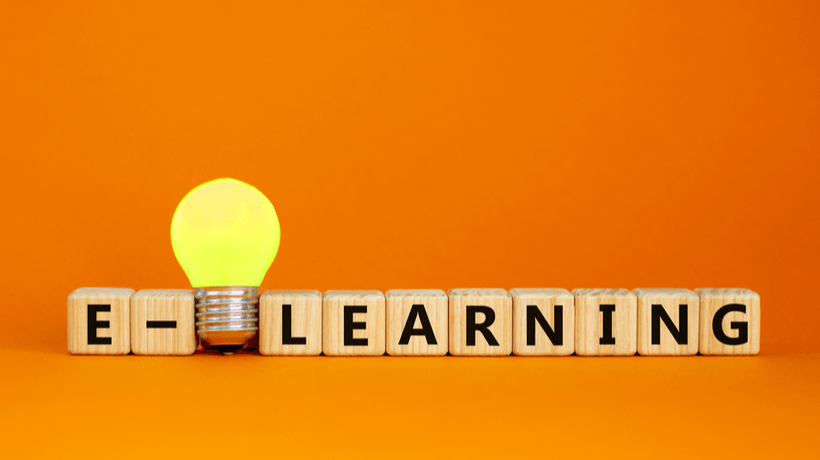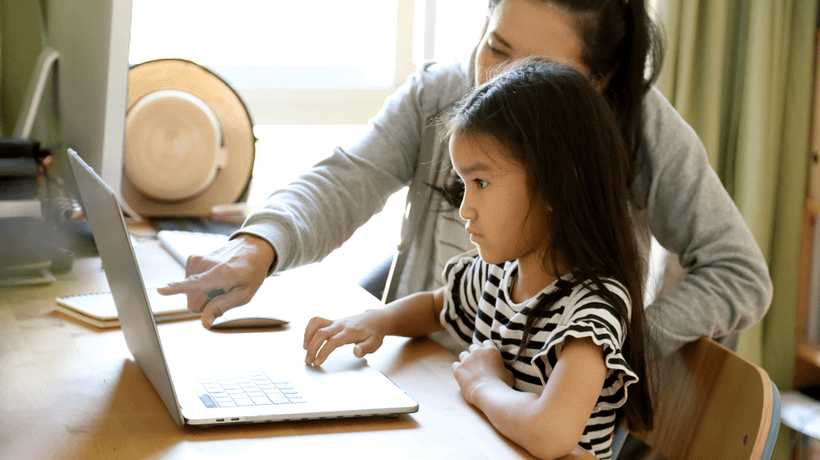K-12 Online Learning Across The Globe During The COVID-19 Pandemic
Online learning is having its moment in the sun. As a result of school closures caused by the COVID-19 pandemic, approximately 90% of the world's wealthiest nations have rapidly pivoted from brick-and-mortar schooling to virtual schooling.
This post is a continuation of last month's post on K-12 online learning during the COVID-19 pandemic. It shares examples of K-12 online learning across the globe; discusses alternative technologies for the vast majority of the world's students [1] who have no access to the internet or a computer; and, outlines some of the key online or eLearning issues confronting teachers, students, and education systems. Space limitations prevent covering every global region, so this post focuses on a few regions and countries and their eLearning efforts.
Latin America
Most Latin American countries [2] have developed some variation of self-paced online learning, typically under the umbrella of Aprendo en Casa ("I Learn at Home") or Tu Escuela en Casa ("Your School at Home") initiatives. Such efforts often include a national portal of digital resources and/or a Learning Management System (LMS) where students log in to access curriculum materials. Tools such as WhatsApp, phone and/or social media are being used to connect teachers with students and provide pedagogical guidance and support for students and parents.
Thanks to large-scale national educational technology initiatives, such as Educarchile and Plan Ceibal, countries like Chile and Uruguay, respectively, enjoy robust infrastructure, well-developed eLearning systems, and thus have been able to move learning online successfully for most learners. This has not been the case in most of the regions where internet connectivity has not reached the poorest populations or the most remote regions (like the Amazon Basin). In Peru for example, while 89% of households enjoy internet access, that figure drops to 10% for rural households. Only 35% of Peruvian teachers have home internet/technology access. Thus, Peru’s national Aprendo en Casa initiative has been supplemented by radio and television. Similarly, in neighboring Ecuador (where I spent time working on a national eLearning initiative), learning via the national platform Educacontigo [3] has been supported by radio and television lessons.
In the poorest regions of Latin America, for example, Guatemala (where I worked for the last two years), there is little online learning. Students can access learning via TV or radio. The Ministry of Education has made a national effort to distribute learning guides to all students. However, learning guides have not reached many students in Guatemala’s remote mountainous indigenous territories; and national educational radio and TV broadcasts are of little value to many of these learners who speak local languages, not the language of formal education—Spanish.
Europe
Across Europe, most education has largely continued via online learning, particularly through national educational platforms such as Italy's La Scuola del Futuro, Oggi ("The School of the Future, Today"), Ireland's Scoilnet ("Schoolnet") [4], and France’s Ma classe à la maison ("My Class at Home") [5]. Like Latin America (and North America), most learning is asynchronous and self-paced. In France, students log into Mon Bureau Numérique ("My Digital Office") to upload and download documents. MBN has an audio call function, but no video chat, so students can talk with teachers. Most lessons include summaries and homework, so there are few actual "classes” except those provided by teachers who decide to do weekly audio calls with students.
While over 90% of French households have internet access [6], that number falls to 70% in poor and rural communities. Thus, like most countries, France has had to supplement online learning with television (mainly) and radio. France Télévisions, Radio France [7], and Arte [8] have launched Nation Apprenante ("Learning Nation") with programs for primary age students (mornings) and secondary school students (afternoons) that link to the French curriculum. At noon, the TV program, C'est toujours pas sorcier ("It's Still Not Difficult"), provides special programming for middle school students.
Elsewhere in Europe, the tiny Baltic nation of Estonia has successfully promoted quality online learning for students [9] during this time. It has aligned its digital resources to its national curriculum; developed e-Koolikott (“e-Schoolbag”), a nationwide online library of more than 20,000 educational resources; and prepared and supported teachers in building their digital literacy skills and learning how to teach the curriculum online.
Australasia
Down under, in New Zealand, at least 80% of households have internet access [10]. Schools are all self-managing and have one laptop per student, either school or parent provided. Thus, the transition to online learning has been smooth. Students are familiar with Google or Microsoft programs and able to work remotely. In order to provide a more high-touch and structured experience, teachers have supplemented self-paced learning with Google Meet.
Like most countries, New Zealand has supplemented online learning with television—in the official languages of English and te reo Māori. The Ministry of Education has provided devices to students without access and provided printed packs of learning materials for households that lack internet access.
Sub-Saharan Africa
Sub-Saharan Africa (SSA) suffers from the lowest rates of internet connectivity on the globe; thus, apart from a few areas (Mauritius and South Africa's Western Cape province are two examples) and apart from eLearning efforts at wealthy private schools, there is generally little formal online learning in SSA as compared to other global regions.

Where education is continuing in SSA, it’s occurring via delivery of print-based resources, mobile phone efforts (WhatsApp, text-based content), television (particularly in Nigeria, South Africa, Kenya, Côte d’Ivoire), and radio. As the image above shows (a schedule of radio classes from Lagos State, Nigeria), most radio comes in the form of broadcast lessons. However, a large part of continuing education for students in Sub-Saharan Africa comes in the form of Interactive Radio Instruction [11] (IRI).
Developed by Stanford University in the 1970s, Interactive Radio Instruction is one-way audio delivery to two audiences—teachers (or, now, families) and students. Each audio episode is a structured, highly interactive, in vivo learning session. Students react verbally and physically to prompts, commands, questions, and exercises posed by radio characters. Because lessons are supplemented by music, text, games, and resources, IRI helps teachers adopt teaching strategies that engage and motivate students so they can better master specific learning outcomes.
IRI is the most successful educational technology [12] no one has ever heard of—it is the only educational technology with a body of longitudinal rigorous data on its effectiveness.
Education Development Center [13] is a global leader in IRI design and delivery. During the Ebola outbreak in Liberia in 2014, EDC's IRI programs allowed students to continue their education from home. To learn more about IRI or audio for learning, read here.
eLearning Issues Across The Globe
I'll conclude with some major observations from global online learning during COVID-19 from both my own work on online learning across the globe and from conversations with a number of teachers and students across the globe.
1. The Digital Divide Is Alive And Well—Everywhere—And It Needs To Be Fixed
Face-to-face schooling has served to disguise many of the digital equity issues faced by students across the globe. In Latin America, Europe, and North America, many students, who have no or poor home internet access, have relied on libraries, after-school study halls, and public spaces for access to technology and/or the internet to do their work. These spaces are now closed because of social distancing; so too is student access to the internet and to learning.
Even in wealthier countries, the internet hasn’t always been as robust as hoped and this, too, impacts student learning:
I’m used to having paper, pen and pencil. I’m not used to this technology. I’m still learning Google Classroom. I still struggle with it. When there’s an internet problem, there’s nothing I can do, and there are a lot of internet issues. — Student 1
Making sure all students have access to digital learning will have to be part of emergency planning as countries plan for a second wave of COVID-19 or future disruptions. Many countries across the globe are beginning to focus on the absolute necessity of digital equity.
2. Online Learning Is Not Impressing Anyone Right Now
Most “online learning” is asynchronous and self-paced. Students access assignments via Google or Apple Classrooms, complete them alone, and turn them in for a grade (or some kind of credit). While some students appreciate the ability to complete their work more quickly (and get onto the important business of video games) every one of the 15 students I interviewed was unimpressed with online learning for reasons that have mainly to do with the predominant current model of asynchronous design:
I have not interacted with other students. The life is sucked out of teachers. There’s no social interaction. This is absolutely the worst possible way to do classes—there’s no hands-on experiences. It’s not real. The workload is not as intense. It’s a dumbed down version of school and it’s lonely. — Student 2
I’m working on my own. It’s harder to do my schoolwork this way. What do I think of online learning? I despise it. — Student 3
3. Teachers Have Struggled To Teach Online
Finally, a teacher's capacity to teach using educational technologies, in general, and to teach online, in particular, varies across countries. The OECD’s Teaching and Learning International Survey (TALIS) [14] reports that fewer than half of the world’s teachers feel well prepared to use technology in their classrooms (63% of Shanghai and 60% of Singapore teachers feel most prepared—the highest across the globe). (Singapore’s National Institute of Education has provided teachers with professional development on how to design pedagogical strategies to teach classes over the internet.)
But in many countries across the globe, many teachers report little familiarity with technology [6]. In Italy, for example, only 20% of teachers [15] had any kind of technology training as of 2019, and around the world, no matter the continent, teachers in wealthy schools have stronger technology skills and use technology more for teaching [16] than teachers in poorer schools. In Latin America, even in large urban areas with relatively robust internet access, teachers are more often than not unfamiliar with the use of the internet in the classroom. Some countries have attempted to fix this in real time. For example, the Irish Government has provided online professional development and guidance to teachers on how to teach online via its Professional Development Service for Teachers. In most places, teachers have learned on the fly (and done well!). But they will need support in teaching with technology and teaching online—everywhere.
Read part 1 of this series on online learning during the COVID-19 pandemic.
Acknowledgments
Thanks to the many teachers and students with whom I spoke. Thanks, too, to Ophelia John (France), Gloria Uyagauri (Ecuador) Karla Lopez (Guatemala), Ugo Chukwujiaka (Nigeria), and Kate Shevland (New Zealand), and Elijah Moran (US) for providing me with information for this article. (Happy Birthday, Elijah!)
References:
[1] Startling disparities in digital learning emerge as COVID-19 spreads: UN education agency
[2] How countries across Latin America use technology during COVID19-driven school closures
[3] Educacontigo
[4] Scoilnet
[7] Radio France
[8] Arte
[9] A STEP AHEAD: ESTONIA EMERGES AS A LEADER IN WORLDWIDE DISTANCE LEARNING EXPERIMENT
[10] Household access to the internet
[11] Expanding Access to Early Childhood Development
[12] Listen to the Radio…..and Learn!
[13] Resources for the COVID-19 Crisis
[14] TALIS - The OECD Teaching and Learning International Survey
[15] Essere a Scuola fascicolo speciale "La scuola a casa"








